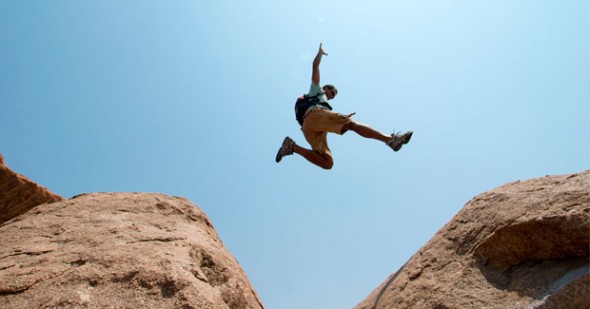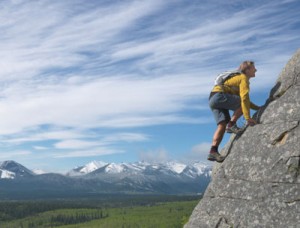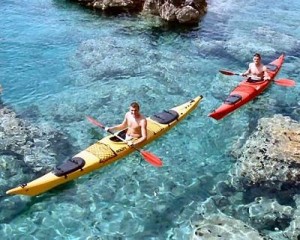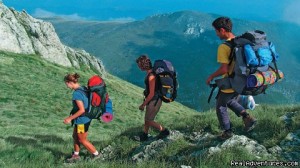
Where are people traveling these days? Into mountains, caves and oceans according to a recent study released by the Adventure Travel Trade Association (ATTA). The study, managed with assistance from George Washington University, shows adventure travel has been growing at a clip of 65% year over year since 2009 and into a $263 billion industry.
This study’s focus area was limited to three major markets: Europe, Latin America and North America, which comprise 70% of overall international departures, according to the UNWTO.
The study found that, of those countries surveyed, 26% of respondents indicated that they participated in adventure travel activities; 16% of all international departures from these three regions were for adventure travel; *the choice of activities influence whether consumers call their trip “adventure.” (*See list of qualifying activities below).
 The study showed that Adventure Travel is resilient and is trending upwards even in difficult economic times. It is also expanding into a broader range of activities. The “soft” adventurer spends the most money per trip, (excluding airfare). However, all adventure travelers spend significant amounts on equipment and apparel before their trip.
The study showed that Adventure Travel is resilient and is trending upwards even in difficult economic times. It is also expanding into a broader range of activities. The “soft” adventurer spends the most money per trip, (excluding airfare). However, all adventure travelers spend significant amounts on equipment and apparel before their trip.
So who are these travelers? Adventure travelers are equally likely to be single (48%) or married (43%), and male (57%) or female. These travelers are between 35-47 years old (average age 36). Industry followers familiar with research from the Adventure Travel Trade Association may expect a higher percentage of baby boomer travelers. However, this study reflects not only consumers of tours but adventure travelers in general; it includes people who organize their own trips and therefore more likely to be younger with more time to plan.
Adventure travelers place importance on exploring new places and meeting and engaging with local cultures while on vacation; this confirms earlier research by ATTA that found that travelers were craving more cultural interaction on trips. These travelers are also more highly educated than other types of travelers, with 70% of hard adventurers having post-secondary education and 63% of soft adventurers having post-secondary education (47% of other travelers possess a two-year degree or higher). Considering these demographic trends, it is not surprising that adventure travelers also have higher levels of household income. The average spend for North American travelers on a hard adventure trip is $500, on soft adventure, $914. For other travelers, the average trip spend is $605. Adventures travelers tend to make their own arrangements, however 8.7 percent indicated visiting a travel agent and 5.8% booked through an agent.
Interestingly, while many hard adventure travelers clearly view international travel as important (75% have valid passports), among soft adventure travelers, only 56.5% have valid passports. 
What do adventure travelers want when they plan a vacation? Regular travelers place a high importance on time to be with friends, time to be with family, relaxation, exciting new activities and learning about different cultures. However, adventure travelers want these elements as well but place a higher importance on exploring new places, time to be in nature, meeting and engaging with local cultures and pushing their physical limits.
Hard Adventure
Hard adventure includes trekking, climbing (mountain, rock and ice) and caving8. These activities are high risk and require a high level of specialized skill. Unsurprisingly, these represented small percentages of the population but still uncovered a sizable market.
The trend over the past three years indicates that the number of hard adventure trips has held steady, at around 2% of the population. However, respondents in Latin America and Europe indicated that they intended to take a hard adventure trip for their next vacation. In North America, the trend was opposite, and the percent of people expressing the intention to take a hard adventure vacation dipped slightly.
Soft Adventure
The number of soft adventure departures represents a substantial percentage of trips worldwide. Interestingly, compared to North Americans and Europeans, Latin Americans are taking the most adventure trips at 35% of total outbound travelers. On average, 25% of international trips taken from all three regions are soft adventure trips. They are more likely to try different activities and destinations than hard adventurers. They are also more likely to respond to targeted marketing.
In all three regions — Latin America, North America and Europe — soft adventure increased steadily over the traveler’s past three trips and continued to do so with future travel intentions. Around 43% of Europeans indicated that for their next vacation they would take a soft adventure trip.

Segmenting the Market in Adventure Travel
Gen Y
The younger generations of travelers between 18 and 30, Gen Y, and people aged between 31 and 44, GenX, are those who have traveled throughout their youth, studied abroad during college and are adept at navigating the Internet to find good deals and new destinations. This segment can further be broken down into these descriptors: high disposable income, time poor.
This group is already in the workforce and has a limited amount of vacation time each year. They will seek to fill as much as possible into their vacation time, often splurging on what they view as once-in-a-lifetime opportunities, such as hiking Mt. Kilimanjaro. This group is more likely to book through a tour operator. They are mostly likely reached through social media.
Another segment can be considered travelers with a smaller budget, but having extensive time. This group engages with the communities and places they go. They are more likely to go trekking or take long train journeys, such as the cross-Siberian railway. Budget and value are the key points for this group, although sustainability/responsibility plays a surprisingly high role in decision-making.
Finally, there is the “baby boomer” segment, those people aged between 45 and 64. The adventure traveler is frequently awakening (or re-awakening) to the adventure travel experience later in life. Many find themselves with extra time and money as their children have moved from the house or they enter retirement with good health and a curiosity to do things they couldn’t during their working years. They have large budgets and value adventures combined with a cultural experience. They also book through tour operators and may take two to three international trips a year. Increasingly, they are bringing grandchildren along. This group is inspired by reading, television and stories from friends and families. Having unusual, authentic and difficult to attain experiences is key with this group.
Types of Adventures in Travel
- Archeological expeditions
- Attending local festivals/fairs Backpacking
- Birdwatching
- Camping
- Canoeing
- Caving
- Climbing (mountain/rock/ice)
- Cruise
- Cultural activities
- Cycling
- Eco-tourism
- Educational programs
- Environmentally sustainable activities
- Fishing/fly-fishing
- Getting to know the locals
- Hiking
- Horseback riding
- Hunting Kayaking/sea/whitewater
- Learning a new language
- Orienteering
- Rafting
- Research expeditions
- Safaris
- Sailing
- Scuba Diving
- Snorkeling
- Skiing/snowboarding
- Surfing
- Trekking
- Walking tours
- Visiting friends/family
- Visiting historical sites
- Volunteer Tourism

































































































































































































































































































Get Social